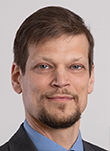 |
|
||||
BiographyTibor Grasser is a professor of microelectronics reliability and an IEEE Fellow. He has been the head of the Institute for Microelectronics since 2016. He has edited various books, e.g. on advanced device modeling (World Scientific), the bias temperature instability (Springer) and hot carrier degradation (Springer), is a distinguished lecturer of the IEEE EDS, is a recipient of the Best and Outstanding Paper Awards at IRPS (2008, 2010, 2012, and 2014), IPFA (2013 and 2014), ESREF (2008) and the IEEE EDS Paul Rappaport Award (2011). He currently serves as an Associate Editor for the IEEE Transactions on Electron Devices following his assignment as Associate Editor for Microelectronics Reliability (Elsevier) and has been involved in various outstanding conferences such as IEDM, IRPS, SISPAD, ESSDERC, and IIRW. Prof. Grasser's current research interests include theoretical modeling of performance aspects of 2D and 3D devices (charge trapping, reliability), starting from the ab initio level over more efficient quantum-mechanical descriptions up to TCAD modeling. The models developed in his group have been made available in the most important commercial TCAD environments.
|
|||||
Preface
Welcome to the 34th annual research review of the Institute for Microelectronics! Our permanent staff members, financed by the Austrian Federal Ministry of Education, Science and Research, have changed from last year and consist of ten full-time employees: four professors, three assistant professors, one senior scientist, one administrative manager, and one full-time technical assistant. In addition, five doctoral researchers and two federally funded post-doctoral researchers are working on exciting research problems. A further nineteen scientists, nine post-doctoral researchers, one part-time assistant, and one full-time technical assistant are presently funded through projects supported by our industrial partners: the Austrian Science Fund (FWF), the Austrian Research Promotion Agency (FFG), the Christian Doppler Gesellschaft (CDG), and the European Commission (EU).
Over the last year, three projects funded by the Austrian Science Fund (“3D Solution of the Boltzmann Equation on Supercomputers”, “Ultimate Scaling and Performance Potential of MoS2 FETs”, and “Defect-Based Modeling of SiC Devices”) and one Austrian Research Promotion Agency project (“Innovative Networks for Networked Aircraft Subsystems”) have been successfully completed. Five FFG projects, the H2020 project “Modeling Unconventional Nanoscaled Device FABrication”, CDG projects on “High Performance Technology CAD”, “Nonvolatile Magnetoresistive Memory and Logic”, and “Single-Defect Spectroscopy in Semiconductor Devices”, as well as two projects funded by the FWF (“General Nano-Electromagnetic Quantum Phase Space Model” and “Numerical Constraints for the Wigner and the Sigma Equation”) are proceeding according to plan.
We are very pleased that our industrial partners have continued and extended their support of projects dealing with a wide range of topics, such as multidisciplinary characterization and modeling for innovative process and product integration of power semiconductors, reliability of oxides in SiC MOSFETs, device degradation and recovery for circuit simulation, reliability at cryogenic temperatures, defect spectroscopy of integrated photo diodes, fundamental fluctuations in spintronics, highly efficient characterization of transistor arrays, noise in semiconductor devices, modeling the reliability and microstructure of metallic microheaters, and modeling of hot-carrier-degradation in Si-transistors.
It is a great pleasure for us to report that one directly funded project, “Multidisciplinary Characterization and Modeling for Innovative Process and Product Integration of Power Semiconductors”, and one FWF project, “Semiconductor/Fluoride Structures on Si for 2D Electronics”, began during the past year. In addition, we are delighted to announce that the ERC Advanced Grant Project “Fluorides for 2D Next-Generation Nanoelectronics” will begin work in September 2022.
We are exceptionally proud of the continually high academic and scientific output produced by our institute, evidenced both by our large number of long-term projects and our high rate of publication — especially regarding our contributions to, and participation in, leading international conferences. We are aware, however, that this success would not be possible without the continued support of our collaborators within academia and industry. As such, we would like to take this opportunity to explicitly convey our gratitude for their trust in our scientific work. In this regard, we are entering into the next year of our institute, as ever, with high expectations.


